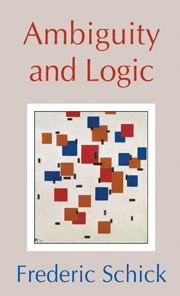1 - Living with Ambiguity
Published online by Cambridge University Press: 10 November 2009
Summary
SAY we are fully informed. Say we know all we could possibly know. Still, there remains ambiguity. What we now do is ambiguous, and what that will bring about is too, and so is all that would have happened if we had done something else instead. How we act in any setting depends on how we there get around this, on how we disambiguate there. And our later making sense of our actions calls for our knowing how we did it.
Let me begin with some stories that may help to bring that out. The first will be about me, and it will do me little credit.
When this happened, I was thirty and on my first good job. I then had two particular friends – call them Adam and Bob. Adam was lively and good-looking. Women liked him and he liked women. Bob too liked women, but they cared for him less, and he ached for what Adam had. He would always ask about Adam, hoping at least to feed fantasies, but I knew nothing he wanted to hear, so I couldn't oblige him.
Then, one day, I did. To his “What's new with Adam?” I said “He moved; he had to.” Bob asked why. “Because it was three o'clock in the morning and he had the music on loud, and the landlord came up from downstairs” – I was making all this up – “… and found him in bed with two women and evicted him.”
- Type
- Chapter
- Information
- Ambiguity and Logic , pp. 1 - 20Publisher: Cambridge University PressPrint publication year: 2003



